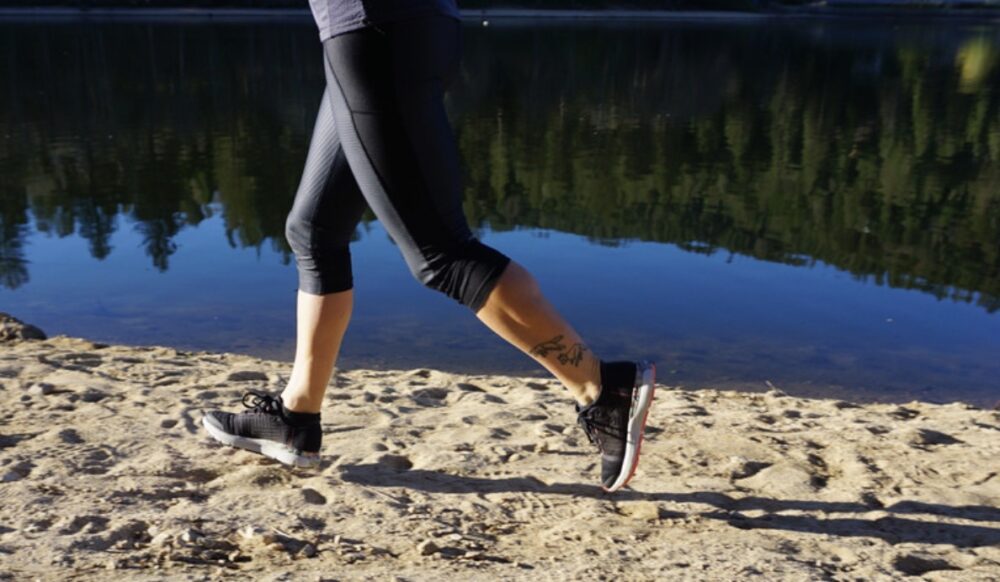Ready to Run: Unlocking Your Potential to Run Naturally by Kelly Starrett & TJ Murphy
I read Ready to Run a couple years ago but now that I’ve upped my mileage significantly as I started into the world of ultra-running, I’m finding myself a lot more aware of nagging little pre-injuries (I’ll call them)… My knee clicks a bit, and so does my big toe. I know my right foot kicks out the the side a few degrees more than it should. Small stuff like that. So, when I was picking a few different books to read for September, it made sense to choose one that would focus on form and injury prevention versus the more esoteric habit change type things that I really, really love reading.
Ready to Run is an awesome in-depth book about not only how to train yourself to run smarter and stronger, but how to avoid injury with prehab, mobility work and other fun stuff. I definitely need the refresher course. It turned out, as I flipped through, that there was a lot of stuff that I had forgotten/ignored. So I’ve started sneaking some of the tips in, and working on slowly adding all of Starrett’s best advice. My biggest vice? Warming up/cooling down. I do my morning yoga, so I do some mobility, but I could definitely do more. And my squats really, really need work!
A few favorite tidbits from Ready to Run:
“All human beings should be able to perform basic maintenance on themselves.”
“If you like running and hate being injured, you can take matters into your own hands and fundamentally shut the door on the chronic injuries that drive you nuts,” Starrett and co-writer TJ Murphy claim. I really like this as much as I hate it… I am not a huge fan of doing my own mobility and massage, I really like going and getting massages (which doesn’t happen very often, but still). Anyway, it’s actually a hard pill to swallow, this idea that you’re in charge of your own health and injury avoidance, it’s so much easier to turn over your physical therapy to a professional. But what if you didn’t have to? I love the idea of being 100% responsible for your own success and health in running, even if I’d prefer to not be in charge…
“Take personal responsibility for routine maintenance”
Similarly, this point is fantastic. (I mean, it’s saying the same thing, but I really love the concept of routine maintenance on your body. Like a car, we can fuel up and do that kind of thing, but we also need to clean out the car regularly, change oil, check fluids, et cetera. Owning a car doesn’t just mean driving, just like having two legs and some running shoes doesn’t just mean run-and-done.) As Starrett says, “I’m asking for just 10 minutes a day for maintenance work, but you need to put in those 10 minutes every day. No days off, no excuses.”
Warm Up, Cool Down
Starrett is a huge fan of active warm ups and cool downs. Not static stretching, not just walking: Dynamic movements that get the body warmed up and mobilized so that when you start running, you REALLY start running. He writes about the two options at a track practice: “Some athletes stand on the infield, chatting with friends, hanging out, and waiting for the start time. Others are actively performing running drills, mobilizing, and performing full-body functional movements like lunges and burpees to get their tissues hot and their circulatory systems moving. Training is also about how you prepare for a workout and how you close it out.”
You know when to stop
“If it feels sketchy, it is sketchy. If you have a gnawing sensation that you may be grinding up some soft tissue, guess what? You’re probably grinding up some soft tissue.” Thank you, Kelly Starrett. I know I need that reminder, because I’m definitely a grin and bear it person, so this was actually hugely helpful to be told.
I really recommend this book: It’s well-written (lines like “After six, maybe seven hours of sleep, the alarm goes off at 4:30. It’s dark, it’s cold, it’s Wednesday.” are SO GOOD) and despite looking like a textbook, the chapters flow well, the photos are easy to understand and follow, and it’s a great reference to look to for mobility as well as running form/lifestyle tweaks. And for those who read these notes and are thinking, “Yes, but what are the HACKS?!” don’t worry: there are plenty in there, from electrolytes in water to compression socks to voodoo floss. I just wanted to hit the basics to get — ahem — warmed up and ready to run.
On that note, I’m heading out the door. Get a copy of Ready to Run here, and get reading!
|||
Before you go, get subscribed — there’s an all-new weekly newsletter every Monday with five tips, tricks, quotes, articles, videos + more that don’t get posted anywhere else but will help inspire you to a healthier active lifestyle.






